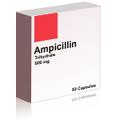Latest Blog Posts:
Get Updates & Coupons
Drug: Ampicillin
Uses, Dosage, and Side Effects of Ampicillin: A Comprehensive Guide
Patients with a wide range of bacterial infections are treated with ampicillin. This is due to its extensive activity against many strains of bacteria hence its popularity in the medical fraternity. The purpose of this article therefore is to provide comprehensively on Ampicillin including how it’s used, dosage instructions and possible side effects that you need to know why it has become a popular choice for treating bacterial infections.
What is Ampicillin?
Ampicillin falls under the group of antibiotics called penicillins. It is used to treat bacterial infections by preventing the growth of bacteria. It can be employed in the treatment of various types of respiratory tract infections, kidney and bladder infections as well as salmonella and meningitis.
Uses of Ampicillin
- Respiratory Tract Infections: Pneumonia, bronchitis, and tonsillitis are some three examples where doctors typically prescribe patients with ampicillin when they are caused by bacteria.
- Urinary Tract Infections (UTIs): Bladder and kidney infections can also be treated using this drug.
- Gastrointestinal Infections:Ampicillin treats a number of diseases caused by Salmonella which include typhoid fever or food poisoning.
- Meningitis:Bacterial meningitis which is an infection on the brain lining and spinal cord can be dealt with using it.
Dosage Recommendations
Depending on the kind and the severity of the infection as well as age and renal function of a patient, dosing for Ampicillin varies. This drug comes in formulations such as oral capsules, liquid suspension, and injection. Adults usually take 250-500 mg every six hours while pediatric doses are based on weight. Always adhere to your physician’s instructions while taking ampicillin.
Potential Side Effects
Sometimes patients may experience side effects while using Ampicillin though its tolerance is quite good amongst many individuals. Common side effects include;
- Illness with vomiting
- Diarrhea
- A reddened skin area
- Allergic reactions to penicillin in people who are allergic to it.
You might also see some severe but rare cases like anaphylaxis which is a serious allergic reaction or Clostridium difficile-associated diarrhea. Whenever you have any major side effects, you should contact your doctor immediately.
Conclusion
Ampicillin still has its place among drugs that fight bacterial infections. It is frequently used by healthcare providers because of its broad-spectrum action plus generally safe side-effect profile. Therefore if you have a urinary tract complaint, respiratory illness or gastrointestinal problems caused by bacteria, Ampicillin could be part of your treatment plan. It is always good to check with your health care provider before making any final decisions on what to do.
Reviewed online pharmacies
| > Generic-Pharmacy.net |
|
Write a review | |
| > PurchaseTablets.com |
|
Write a review | |
| > Generic4all.com |
|
Write a review | |
| > Drugs-Med.com |
|
Write a review | |
| > SecureTablets.com |
|
Write a review |




